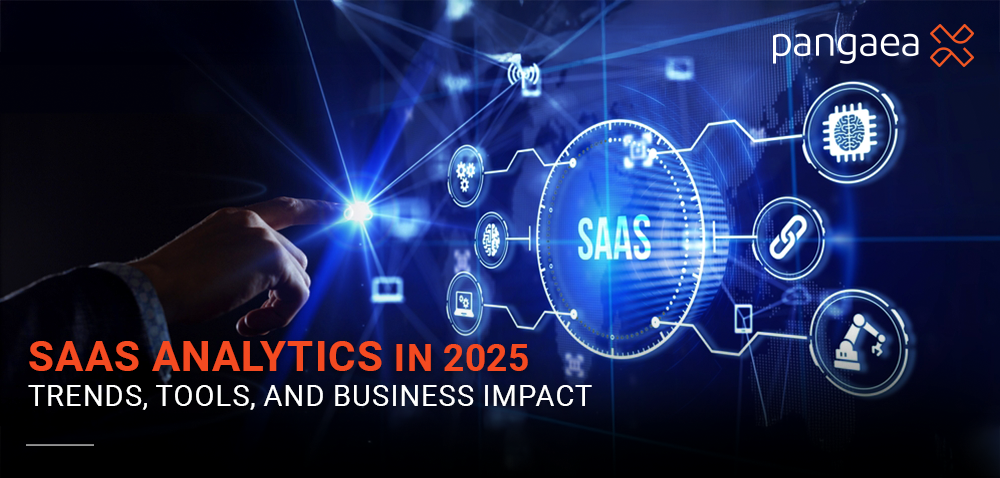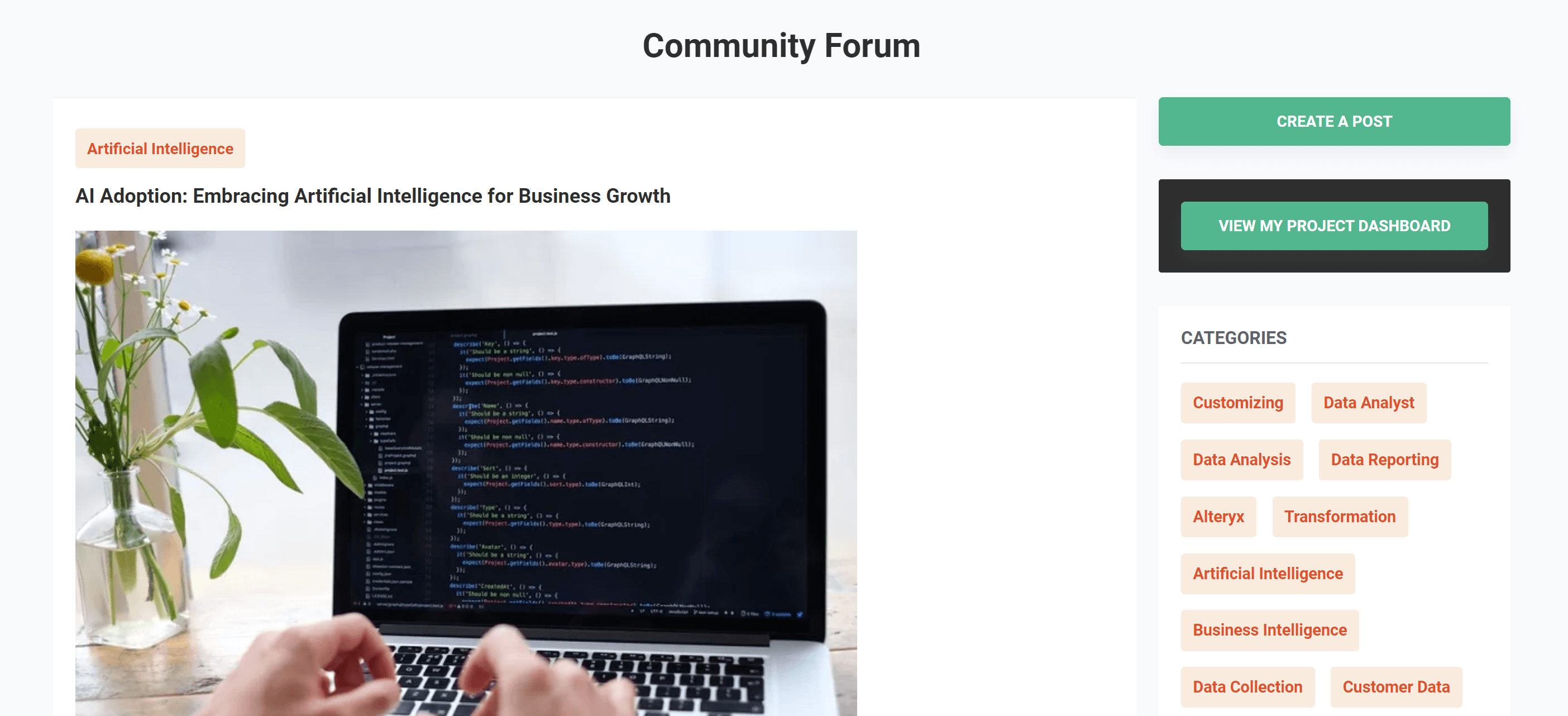SaaS Analytics in 2025: Trends, Tools, and Business Impact

The SaaS industry is skyrocketing. In 2025, the global market stands at $315.68 billion and is projected to surpass $1 trillion by 2032 (Fortune Business Insights). Data-driven decision-making is at the core of this explosive growth.
SaaS analytics the fusion of AI, automation, and real-time insights, is transforming how businesses scale, retain customers, and maximize revenue. From predictive analytics to real-time dashboards, the trends shaping SaaS analytics in 2025 are redefining decision-making.
With powerful tools like Mixpanel and Sisense leading the charge and the rise of freelance data analysts, companies now have more ways than ever to extract value from their data. This blog explores the latest trends, must-have tools, and the business impact of SaaS analytics—and how you can leverage them for success this year.
What is SaaS Analytics?
SaaS analytics is the backbone of modern subscription-based software companies. It’s all about collecting and analyzing data to think user engagement, monthly recurring revenue (MRR), churn rates, and customer lifetime value (LTV) to make smarter decisions. Unlike traditional software, SaaS thrives on recurring revenue and customer retention, making analytics a must-have.
Tools like Tableau and Amplitude simplify this by offering intuitive dashboards that track key SaaS metrics in real-time. Whether you’re measuring feature adoption or calculating customer acquisition cost (CAC), SaaS analytics provides the roadmap to growth.
Why does this matter in 2025?
With the competition heating up, businesses need every edge. Analytics isn’t just about understanding the past; it’s about shaping the future. And with the right tools and talent, like an expert freelance data analyst, you can unlock its full potential.
Top SaaS Analytics Trends in 2025
The SaaS analytics landscape is evolving fast. Here are the five trends defining 2025, complete with tools and real-world applications.
1. AI-Powered Predictive Analytics
AI is taking SaaS analytics to the next level. Forget just reporting what happened—tools like Mixpanel and DataRobot now predict what’s coming. Imagine knowing a customer is 80% likely to churn 30 days before they do. That’s the power of predictive analytics. In 2025, AI will analyze historical data to forecast churn, spot upsell opportunities, and personalize user experiences.
For example, Mixpanel might flag a drop in feature usage, letting you launch a targeted campaign to re-engage users before they cancel. This trend is a goldmine for proactive SaaS strategies.
2. Embedded Analytics for Seamless Insights
Gone are the days of toggling between tools. Embedded analytics—think Sisense or Looker Studio brings insights right into your SaaS platform. Picture a project management app with a Sisense dashboard showing team productivity alongside tasks. It’s seamless, boosts adoption, and saves time. In 2025, customers will expect this level of integration, making embedded analytics a must for user experience (UX) and retention.
3. Customer Success Metrics Take Center Stage
Retention is king in SaaS, and 2025 is all about customer success. Tools like Userpilot and Gainsight zero in on metrics like feature adoption, Net Promoter Score (NPS), and product usage. Keeping customers happy is cheaper than acquiring new ones. Userpilot, for instance, might reveal that only 30% of users engage with a new feature, prompting an onboarding push that cuts churn by 15%. This trend is reshaping how SaaS firms prioritize analytics.
4. Real-Time Data and Automation
Speed matters. Real-time analytics tools like Toucan Toco and Amplitude deliver instant insights—think alerts for a sudden 10% drop in subscriptions. Automation takes it further, slashing manual reporting time. A billing platform using Amplitude could notify teams of payment failures within seconds, not hours. In 2025, this immediacy will be standard, driving operational efficiency and quick responses to market shifts.
5. Privacy and Compliance Analytics
Data privacy isn’t optional. With GDPR and CCPA tightening, SaaS analytics in 2025 will prioritize secure, transparent systems. Tools like Snowflake and OneTrust help here. Snowflake offers a secure data warehouse, while OneTrust ensures compliance tracking.
For example, a SaaS vendor might use Snowflake to anonymize user data for a compliance report, keeping regulators happy and customers safe. This trend is non-negotiable as privacy laws evolve.
The Role of Freelance Data Analysts in SaaS Analytics
SaaS firms don’t always need a full-time data team, so freelance data analysts are stepping in to fill the gap. In 2025, hiring freelance analysts is a cost-effective, flexible solution for scaling businesses. These experts provide specialized insights, advanced analytics, and AI-driven strategies without the overhead of a permanent hire. here are the activities they perform:
- Data Integration: They unify CRM, billing, and usage data into a single view—say, using Snowflake or Tableau.
- Custom Dashboards: They build tailored visuals with Power BI or Mixpanel, making insights accessible.
- Trend Analysis: They spot patterns, like churn triggers, and suggest fixes.
- Tool Setup: They implement platforms like Amplitude or Sisense, fast-tracking your analytics game.
The Impact of Hiring a Freelance Data Analyst
A freelance data analyst can cut setup time by 50%, delivering actionable insights in weeks. Need to hire a data analyst? Platforms like Upwork, Toptal, and Pangaea X are goldmines. Pangaea X stands out with its focus on data-driven talent, connecting SaaS firms with analysts skilled in Python, R, and SaaS-specific tools like Userpilot.
Top SaaS Analytics Tools in 2025
SaaS businesses thrive on data-driven decisions. The right analytics tool can supercharge growth, retention, and customer engagement.
Tools are the engine of SaaS analytics. Here’s your 2025 toolkit:
- Mixpanel: Tracks user behavior and predicts churn—perfect for retention-focused teams.
- Sisense: Excels at embedded analytics, offering white-label dashboards for seamless UX.
- Userpilot: Specializes in customer success, tracking in-app adoption and NPS.
- Toucan Toco: Delivers real-time, mobile-friendly dashboards for on-the-go insights.
- Snowflake: A secure data warehouse for compliance and big data needs.
- Tableau: Versatile for custom visuals, often used by freelance analysts.
- Amplitude: Automates event tracking and reporting for instant decisions.
Mixpanel suits behavior analysis, while Sisense shines for embedded needs. Tableau’s flexibility makes it a favorite for freelancers.
Business Impact of SaaS Analytics in 2025
SaaS analytics isn’t just about tracking data—it’s about transforming insights into revenue, retention, and efficiency. Companies leveraging analytics effectively will outpace competitors and future-proof their growth.
How does this all translate to results? Let’s break it down.
1. Revenue Growth
Predictive analytics drives revenue. Mixpanel’s upsell predictions can lift annual recurring revenue (ARR) by 10-15%. With SaaS margins under pressure, that’s a lifeline for growth.
2. Customer Retention
Retention saves money—reducing churn by 5% can boost profits by 25-95% (industry stat). Userpilot’s adoption tracking might cut churn by 20%, keeping customers longer.
3. Operational Efficiency
Automation is a time-saver. Toucan Toco’s real-time dashboards can slash reporting time by 10+ hours weekly, freeing teams for strategy over grunt work.
4. Competitive Edge
Stand out or get left behind. Sisense’s embedded analytics can make your SaaS the go-to choice in a crowded market, winning over discerning clients.
How to Leverage SaaS Analytics in 2025
Harnessing SaaS analytics can transform your business, but knowing where to start is key. A structured approach ensures you maximize data-driven decision-making while staying agile in a competitive landscape. Follow this five-step plan to make the most of SaaS analytics in 2025.
- Define Key Performance Indicators (KPIs): Identify the metrics that matter most—focus on Monthly Recurring Revenue (MRR), churn rate, and Lifetime Value (LTV). Use Amplitude to track and visualize these KPIs in real time.
- Pick the Right Tools: Choose analytics platforms based on your needs. Mixpanel is great for customer behavior tracking, while Snowflake helps with data compliance and governance. Looker Studio is ideal for budget-conscious businesses.
- Hire a Freelance Data Analyst: If you lack in-house expertise, hire a freelance data analyst from Upwork, Toptal, or Pangaea X to set up dashboards and automate reporting. Pangaea X experts can implement Sisense within weeks, ensuring faster decision-making.
- Automate Insights for Faster Action: Use tools like Toucan Toco to automate reporting and generate real-time alerts. This eliminates manual effort and ensures instant responses to critical business changes.
- Review and Adapt Weekly: Data is only valuable if acted upon. Regularly analyze reports and adjust strategies based on emerging trends. For example, if Userpilot detects low feature adoption, enhance onboarding or tweak UI to improve engagement.
Small steps lead to big wins. Start with a single tool, integrate insights gradually, and scale as your analytics maturity grows. By following this roadmap, your SaaS business can stay ahead in 2025.
Challenges in SaaS Analytics
While SaaS analytics offers immense benefits, businesses face several hurdles in implementing and optimizing their data strategies. These challenges can slow growth and reduce efficiency if not addressed properly.
- Data Silos: Data is often scattered across CRM, billing, and product usage platforms, making it difficult to get a unified view of customer behavior.
- High Tool Costs: Premium analytics platforms can be expensive, making them inaccessible for startups or small SaaS companies.
- Skill Gaps: Many SaaS businesses lack in-house expertise to manage and interpret complex analytics tools.
- Privacy & Compliance Issues: Regulations like GDPR, CCPA, and HIPAA require strict data handling, making compliance a challenge.
- Data Overload: With massive amounts of data generated daily, businesses struggle to filter actionable insights from noise.
Solutions to Overcome These Challenges
By implementing the right tools and strategies, businesses can effectively overcome these challenges and optimize their SaaS analytics for better decision-making.
- Unify Data Sources: Use tools like Snowflake or Fivetran to centralize data and eliminate silos for a seamless analytics process.
- Opt for Budget-Friendly Tools: Start with free or affordable solutions like Looker Studio or Apache Superset before scaling to premium analytics platforms.
- Hire or Upskill Talent: Use platforms like Pangaea X, Toptal, or Upwork to hire freelance data analysts, or upskill employees with Tableau’s free training courses.
- Ensure Data Compliance: Use OneTrust for privacy management and Snowflake for secure, encrypted data storage to meet regulatory requirements.
- Leverage AI for Smart Insights: Deploy AI-powered analytics tools like Mixpanel and DataRobot to filter key insights from overwhelming data streams.
By addressing these challenges with the right solutions, SaaS businesses can unlock the full potential of analytics and drive growth in 2025.
Conclusion
SaaS analytics in 2025 is powered by AI, real-time insights, and customer success metrics. Businesses leveraging tools like Mixpanel, Sisense, and Userpilot, along with Hiring expert freelance analysts from platforms like Pangaea X, can optimize operations and fuel growth. By integrating cutting-edge analytics and expert talent, companies can stay ahead of the competition and transform data into a strategic advantage.
Get your data results fast and accelerate your business performance with the insights you need today.



